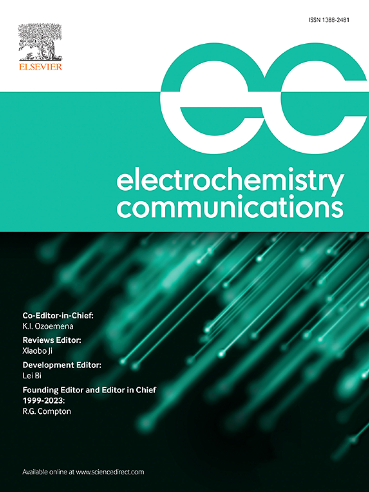通过改变负极形态来降低蒸汽/二氧化碳共电解SOEC的气体扩散阻力
IF 4.2
3区 工程技术
Q2 ELECTROCHEMISTRY
引用次数: 0
摘要
固体氧化物电解电池(SOECs)在生产合成气(氢和一氧化碳的混合物)方面表现出显著的效率,因为它们能够同时电解蒸汽和二氧化碳。然而,在蒸汽/二氧化碳共电解过程中,负极(燃料电极)中与气体扩散过程相关的极化电阻随着CO2浓度的增加而增加。为了降低负极微管soec中的气体扩散阻力,在负极中使用丙烯酸树脂和石墨作为成孔剂。在H2O/CO2 = 2和700°C的条件下,石墨成孔材料的电流密度从0.477 A cm−2提高到0.544 A cm−2,这是由于在低于10 Hz的低频下,气体扩散过程中产生的极化电阻降低了22%。聚焦离子束扫描电镜分析表明,石墨成孔器的微孔(直径小于2 μm)比例较高,有利于降低负极中气体扩散过程的极化阻力。因此,优化负极结构对提高共电解soec的性能至关重要。本文章由计算机程序翻译,如有差异,请以英文原文为准。
Reduced gas diffusion resistance via modification of negatrode morphology for steam/CO2 co-electrolysis SOEC
Solid oxide electrolysis cells (SOECs) exhibit remarkable efficiency in the production of syngas, a mixture of hydrogen and carbon monoxide, owing to their ability to electrolyze steam and carbon dioxide simultaneously. However, the polarization resistance associated with the gas diffusion process in the negatrode (fuel electrode) increases with increasing CO2 concentrations during steam/CO2 co-electrolysis. To reduce the gas diffusion resistance in negatrode-supported microtubular SOECs, acrylic resin and graphite are employed as pore formers in the negatrode. Replacing acrylic resin with graphite pore formers enhances the current density from 0.477 to 0.544 A cm−2 at H2O/CO2 = 2 and 700 °C owing to 22 % reduction in the polarization resistance associated with the gas diffusion process at low frequencies below 10 Hz. Focused ion beam-scanning electron microscopy analysis reveals that the fraction of small-pores (less than 2 μm in diameter) is higher in the cell employing the graphite pore former, which helps decrease the polarization resistance associated with the gas diffusion process in the negatrode. Thus, optimizing the negatrode microstructure is crucial to enhancing the performance of co-electrolysis SOECs.
求助全文
通过发布文献求助,成功后即可免费获取论文全文。
去求助
来源期刊

Electrochemistry Communications
工程技术-电化学
CiteScore
8.50
自引率
3.70%
发文量
160
审稿时长
1.2 months
期刊介绍:
Electrochemistry Communications is an open access journal providing fast dissemination of short communications, full communications and mini reviews covering the whole field of electrochemistry which merit urgent publication. Short communications are limited to a maximum of 20,000 characters (including spaces) while full communications and mini reviews are limited to 25,000 characters (including spaces). Supplementary information is permitted for full communications and mini reviews but not for short communications. We aim to be the fastest journal in electrochemistry for these types of papers.
 求助内容:
求助内容: 应助结果提醒方式:
应助结果提醒方式:


